Here’s a brute fact: Accurate fly casting catches fish. Everywhere and of all kinds. The more accurately you place your fly, the more and larger fish you’re going to catch (over time, of course, and assuming other presentation factors are equal). Few, if any, of the expert anglers I know would quarrel with this concept.
But is it possible to cast too accurately? Is it possible that placing our fly too precisely can actually hamper our success? These are questions that, in my experience, rarely get asked or even considered.
I had a friend visit me in Montana recently, one with exceptional casting skills. We spent some time sight-nymphing the Madison River, in part to take advantage of his casting ability. In the mildly turbulent flows of the Madison (and other, similar rivers), fish nymphing sub-surface can be quite difficult to see clearly, even when lying in the shallowest of water. The trout’s natural camouflage, waves passing overhead, and the play of light from their bodies and the river bottom all help to render them ghostly, indistinct. And the minor but constant body movements required to maintain their positions in the flow also reflect ever-changing light patterns, challenging the eyes of even the most expert anglers.
Most of the time, intercepting a drifting nymph requires a trout to move. As much as they might prefer remaining motionless and having every natural delivered directly to their mouths, this doesn’t always happen (minimizing motion both conserves energy and helps fish remain hidden). These feeding movements can be subtle—perhaps just a slight tip up or down or a barely detectable side to side gesture. Other times they’re more pronounced. Ranging several feet to either side of their lie to take a natural isn’t uncommon. It is in this combination of movements—those required to maintain their position in the river and those involved in feeding—that a potential issue with casting accuracy arises.
Picture a nymph drifting right in line to a fish. He eats it by simply opening and closing his mouth. Because the fish barely moved, it may appear to the angler as though nothing at all happened. Or, should the angler detect some movement, it might be interpreted as nothing more than the fish being wafted about by the current, or a quirk of the light. Think now about a nymph drifting four inches to the fish’s side. It’s taken via a minor adjustment in body position. This too could easily be misconstrued as nothing but the requisite motion for remaining in its lie. You see the point—in either case, it’s not obvious that the fish has just fed.
Just as with a natural fly, an artificial drifting either in line with or extremely close to a fish is subject to being taken with no overt indications. How then to know when our fly is taken? Should we simply strike on speculation? Clearly that’s one way to find out, but it’s a tactic I don’t recommend because if the fly wasn’t taken, the disturbance of the strike often spooks the fish. In my friend’s case, he found out quickly that large Madison trout in shallow water tolerate nothing suspicious like this; they simply head for the depths. While my friend’s casts had pinpoint accuracy, drifting his fly directly to the fish, his eyes lacked the years of training required to discern the subtle signs of a take that such accuracy engenders. Indeed, he was too accurate for his own good. He needed a more obvious signal to work with.
I suggested making less accurate casts. Casts that would put his fly anywhere from a foot or more to one side or the other of the fish. Should a fish then make a corresponding movement it would almost certainly signal a take, since such prominent moves aren’t necessary for a fish to stay in its lie, nor are they a response to the current. (Too, reflections by themselves don’t make a fish appear to move a foot or more.) Experience has shown that the majority of the time, striking on such a distinct move results in a hooked fish, and it certainly did for my friend. By substantially widening his target area he was able to detect takes much better, catching a number of fine trout in the process.
While an intentionally wide target area may seldom be desirable, in a situation like this one (and there are others) it can certainly make success much easier to come by. Mind you, I never like to think of such situations as a free pass to cast inaccurately, but if we’re going to err now and then—and who among us doesn’t?—it’s nice to know there are times and places it can actually help.
Readers may be wondering why not simply use an indicator to help recognize the take? Two reasons, among others. Indicator set-ups spook too many wary, shallow-water fish for my liking, and larger Madison trout often inhale and eject nymphs before an indicator ever provides a sign to strike.










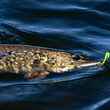
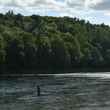



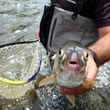



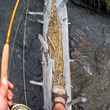




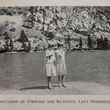
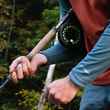



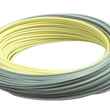
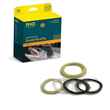
Comments
jim MacDonall replied on Permalink
Interesting idea - to cast to the side of a fish. But I'd say your friend was not casting inaccuratey, he was casting exactly where he wanted his fly, a foot to the side of the fish. He still was casting accurately.
johnjuracek replied on Permalink
I appreciate your comment, Jim. Thank you.
I was thinking more in terms of having a several foot wide target area to cast at, as opposed to a several inch wide area (i.e. casting directly at the fish). All locations in that wider target area are essentially equal in that the movement of the fish to take the fly is more obvious, therefore placing less of a premium on accuracy.
Glenn Dotter replied on Permalink
A cast is a cast is a cast my friend. After 60 years of tossing flies, it is still putting the fly where you want it. We as aging veterans must caution about being so technical that the younger members of flyfishers worry so much about being technically correct than about reading the water, spotting fish and having fun fooling them. You article is good but (and I am sure you know) if you put it right in front of the fish and he doesn't take it, there are a number of considerations. The real fun and challenge is to figure them out. Casting to a slightly different angle is just one of them.
Jim Dowd replied on Permalink
This tactic is wonderfully effective with fish like carp or bonefish as well. Often, when the fly is directly in front of them, the take is so subtle that its neatly impossible to discern. However when the presentation is slightly to the side of the fish, it usually must turn a bit to eat the fly - making it easier to see what's happening. Accurate casting is still important; just not "on the nose"...
Pages